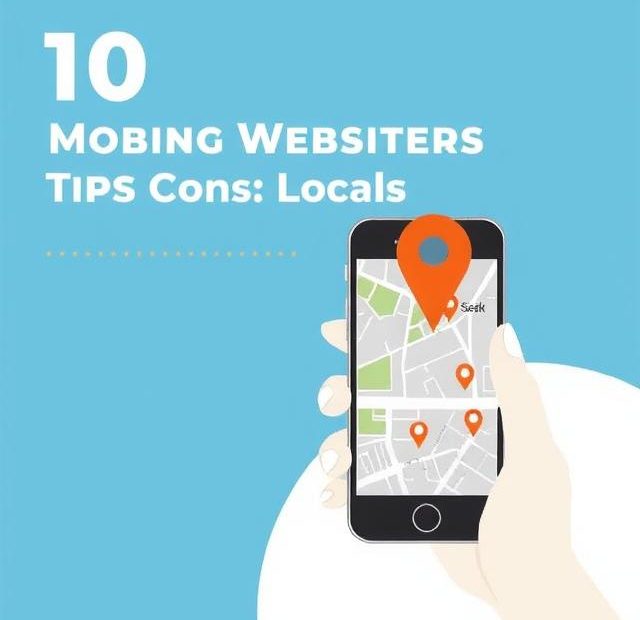In today’s mobile-first world, people are using their smartphones for everything—from finding nearby restaurants to checking store hours and reading reviews. For local businesses, this mobile behavior is a goldmine. But if your website isn’t optimized for mobile users, you’re likely losing traffic, leads, and customers. Mobile optimization is no longer optional—it’s essential for local SEO success. In this article, I’ll walk you through practical, effective mobile optimization tips that can significantly boost your local search visibility.
Why Mobile Optimization Matters for Local SEO
Before diving into the tips, let’s get one thing clear: Google uses mobile-first indexing, meaning it predominantly uses the mobile version of the content for indexing and ranking. In addition, research shows that over 60% of local searches are performed on mobile devices. So if your website doesn’t load well or provide a smooth experience on smartphones, it could kill your local rankings—and user experience.
A fast, user-friendly mobile site can increase dwell time, reduce bounce rates, and help convert local searchers into paying customers.
1. Make Your Website Responsive
The foundation of mobile optimization starts with a responsive design. This means your website automatically adjusts its layout, images, and functionalities to fit various screen sizes—from smartphones to tablets to desktops.
What to do:
-
Use responsive themes or frameworks like Bootstrap.
-
Test your site on multiple devices.
-
Avoid pop-ups that cover content on mobile screens.
Google favors responsive websites and even provides a Mobile-Friendly Test tool to help you evaluate your site’s design.
2. Improve Mobile Page Speed
Speed is crucial. Mobile users expect instant results, and a delay of even one second can lead to a drop in conversions. Google also considers page speed as a ranking factor, especially for mobile searches.
Tips to improve speed:
-
Use image compression tools like TinyPNG or ImageOptim.
-
Minimize HTTP requests by combining files.
-
Use lazy loading for images and videos.
-
Choose a fast, reliable hosting provider.
-
Leverage browser caching and a content delivery network (CDN).
Use tools like Google PageSpeed Insights and GTmetrix to find out what’s slowing your site down.
3. Optimize for Local Keywords
Local SEO means targeting customers in a specific geographic area. To make this work on mobile, you need to ensure your site and content are optimized with local keywords that mobile users are likely to type or speak.
How to do it:
-
Include your city or neighborhood name in your page titles, meta descriptions, headers, and content.
-
Use long-tail keywords like “best vegan bakery in Brooklyn” instead of just “vegan bakery”.
-
Write blog posts or landing pages that focus on local events, landmarks, or community interests.
Also, think about voice search optimization—mobile users often use voice assistants to find local businesses. Include natural, conversational keywords.
4. Simplify Navigation
Mobile screens are small, so your navigation needs to be simple and intuitive. If users can’t find what they’re looking for quickly, they’ll leave.
Navigation tips:
-
Use a sticky header with an easy-to-access menu.
-
Limit the number of menu items.
-
Use clear call-to-action buttons like “Call Now” or “Get Directions.”
-
Enable click-to-call functionality for phone numbers.
-
Keep important information (hours, location, contact info) easily visible.
Think of your mobile site as a “map”—if users get lost, they won’t stick around.
5. Leverage Google Business Profile for Mobile Search
When people search for businesses on mobile, one of the first things they see is the Google Business Profile (formerly Google My Business). This listing appears above organic results and is heavily influenced by mobile behavior.
Optimization tips:
-
Ensure your business name, address, and phone number (NAP) are accurate and consistent.
-
Add high-quality images of your storefront, products, and services.
-
Encourage satisfied customers to leave reviews.
-
Update your business hours and add special hours for holidays or events.
-
Use Google Posts to share updates, promotions, or news.
Google Business Profile is often your first impression on mobile—make it count.
6. Add Structured Data Markup
Schema markup helps search engines understand your content better, which can lead to rich snippets in search results. For local SEO, structured data can highlight your address, phone number, reviews, business hours, and more.
Use LocalBusiness schema to enhance visibility in mobile search results. This can improve your appearance in “local packs,” maps, and voice searches.
Use Google’s Structured Data Testing Tool to ensure your schema is implemented correctly.
7. Use Mobile-Specific Features
Take advantage of mobile-exclusive features to create a seamless experience for users.
Consider adding:
-
Click-to-call buttons so users can contact you instantly.
-
Map integration for easy navigation.
-
Text message or WhatsApp options for quick communication.
-
Mobile-friendly forms with autofill and large input fields.
The easier you make it for people to interact with your business on mobile, the higher your engagement and conversion rates.
8. Monitor and Analyze Mobile Performance
You can’t improve what you don’t measure. Regularly review your mobile performance using tools like:
-
Google Analytics: Check mobile traffic, bounce rate, and conversions.
-
Google Search Console: Monitor mobile usability issues and indexing.
-
Heatmap tools (like Hotjar): See where mobile users tap, scroll, and drop off.
Use this data to tweak and test elements like buttons, layouts, and content.
Final Thoughts
Mobile optimization isn’t just about technical tweaks—it’s about understanding user behavior and delivering a seamless local experience. By making your website responsive, fast, and easy to use on mobile, and by aligning it with local SEO best practices, you’re setting your business up for success in today’s digital world.
Remember, local customers are searching for you on their phones right now. Will they find you—and more importantly, will they stay?
Also, you can learn more about Location Businesses here.
